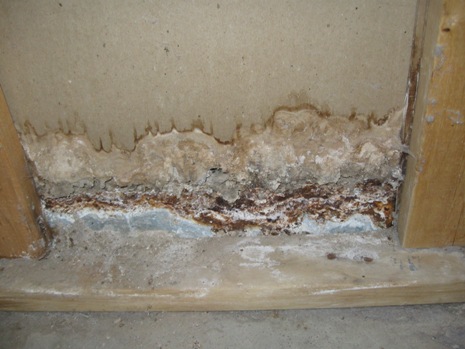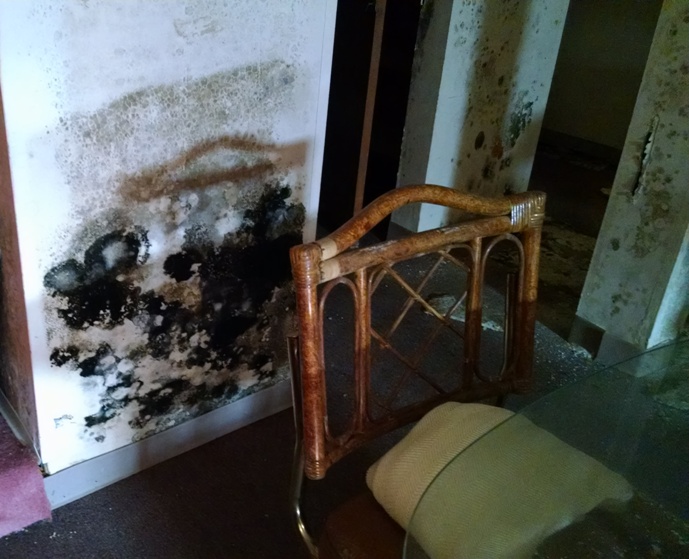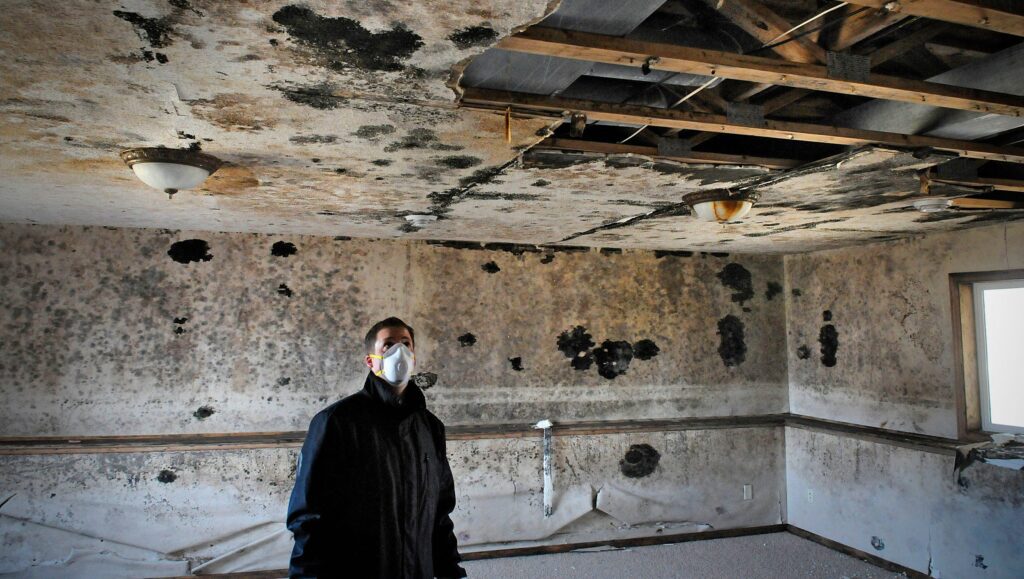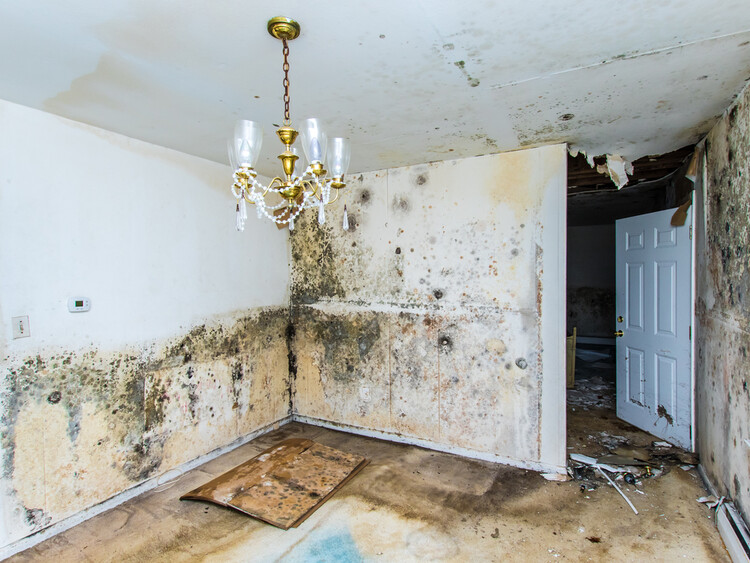Imagine coming home after a long day, only to discover that your beloved house has been infiltrated by an unwelcome guest – mold. In this article, we will explore the potential damage that mold can cause to a house and the steps you can take to prevent or mitigate its harmful effects. From compromising structural integrity to posing health risks, mold has the potential to turn your cozy abode into a nightmare. Join us as we uncover the menacing nature of mold and how to safeguard your home from its destructive grasp.

Introduction to mold in houses
Mold is a common problem that can affect houses and buildings of all types. It is a type of fungus that grows in moist and humid environments. Mold can thrive indoors and outdoors, and it can easily find its way into a house through open windows, doors, and even through the air conditioning and heating systems. Once inside a house, mold can quickly spread and cause a number of issues, ranging from structural damage to health problems for the occupants.
Understanding the impact of mold on structures
Mold can have a significant impact on the structure of a house. It feeds on organic materials such as wood, drywall, and insulation, causing them to deteriorate over time. As mold grows and spreads, it can weaken the affected materials, leading to structural damage and compromising the stability of the house. This can result in sagging floors, bulging walls, and even collapse in severe cases. Additionally, mold can also affect the integrity of electrical systems and create fire hazards.

The role of moisture and humidity in mold growth
Moisture and humidity are the main factors that contribute to mold growth in houses. When there is excess moisture present, whether it’s due to leaks, flooding, or high humidity levels, it creates the perfect environment for mold to thrive. Mold spores, which are naturally present in the air, can easily settle on damp surfaces and begin to grow and multiply. It is essential to control moisture and humidity levels in a house to prevent mold growth and its associated problems.
Common types of mold found in houses
There are several common types of mold that can be found in houses. Some of these include Stachybotrys chartarum, also known as black mold, which is known for its dark green or black appearance. Another common type is Aspergillus, which can vary in color from white to green. Cladosporium is another type that is often found on fabrics, carpets, and wood surfaces. These molds differ in their appearance and characteristics, but they all share the potential to cause damage to houses and pose health risks to the occupants.

The visible signs of mold damage
Identifying mold damage in a house can sometimes be challenging, as mold can grow in hidden areas such as behind walls, under carpets, or in attics. However, there are some visible signs that can indicate the presence of mold. These include discoloration or staining on walls or ceilings, a musty odor, peeling or bubbling paint, and the presence of visible mold growth. It’s important not to ignore these signs, as they might indicate a larger mold problem that needs immediate attention.
Health risks associated with mold in houses
Mold can pose significant health risks to the occupants of a house. When mold spores are inhaled, they can trigger allergic reactions in some individuals, causing symptoms such as sneezing, coughing, itchy eyes, and respiratory issues. People with pre-existing respiratory conditions, allergies, or weakened immune systems are particularly susceptible to mold-related health problems. Prolonged exposure to mold can also lead to more severe health issues, including infections and long-term respiratory problems.

Structural damage caused by mold
As mentioned earlier, mold can cause structural damage in a house. When mold grows on and feeds off organic materials such as wood, it can weaken their structure over time. This can result in compromised load-bearing elements, such as beams and joists, which are essential for the stability of a house. The weakened materials can sag, warp, or even collapse if not addressed promptly. Additionally, mold can also contribute to the deterioration of insulation, drywall, and other building materials, further impacting the overall structure of the house.
How mold can affect indoor air quality
Mold can significantly affect the indoor air quality of a house. As mold grows and releases spores into the air, these particles can be easily inhaled by the occupants. This can lead to respiratory problems, allergies, and other health issues. Mold spores can also settle on surfaces and objects, contaminating them and potentially exacerbating the mold problem. Poor indoor air quality can make the living environment uncomfortable and unhealthy, and it is essential to address mold issues promptly to maintain good air quality inside a house.

The importance of mold remediation
Mold remediation is crucial when dealing with a mold problem in a house. It involves the removal and cleanup of mold-contaminated materials, as well as addressing the underlying cause of the mold growth to prevent its recurrence. Professional mold remediation experts have the knowledge, skills, and equipment to safely and effectively handle mold issues. They can identify the source of moisture, contain the mold growth, remove affected materials, and restore the affected areas to a mold-free and safe condition.
Preventing mold growth in houses
Prevention is key when it comes to mold growth in houses. By taking certain preventative measures, you can significantly reduce the risk of mold infestation. Here are some steps you can take:
-
Control moisture: Keep your house dry and well-ventilated. Fix any leaks, repair water damage promptly, and use dehumidifiers in areas with high humidity.
-
Proper ventilation: Ensure that your house has adequate ventilation, especially in areas prone to moisture, such as bathrooms, kitchens, and basements.
-
Regular cleaning: Regularly clean and inspect your house for any signs of mold growth. Pay close attention to areas that are susceptible to moisture, such as bathrooms, laundry rooms, and basements.
-
Reduce indoor humidity: Use exhaust fans when cooking or showering, open windows for ventilation, and make sure air conditioning systems are properly maintained.
-
Use mold-resistant materials: When renovating or building, consider using mold-resistant materials and paints, which can help prevent mold growth.
By following these preventative measures and staying vigilant for any signs of mold, you can keep your house mold-free and ensure a healthy living environment for you and your family.
In conclusion, a house can indeed be ruined by mold. The impact of mold on structures, the health risks it poses, and the potential for structural damage and compromised indoor air quality cannot be underestimated. However, by understanding the causes and signs of mold growth, taking preventative measures, and promptly addressing any mold issues, you can protect your house from mold-related damages and maintain a safe and healthy living environment.